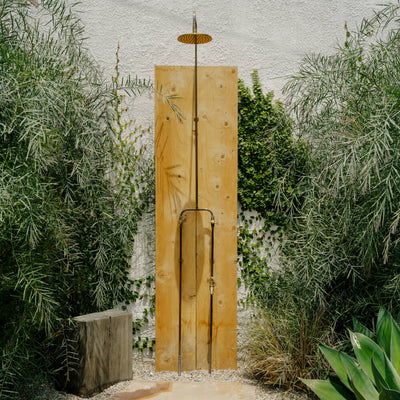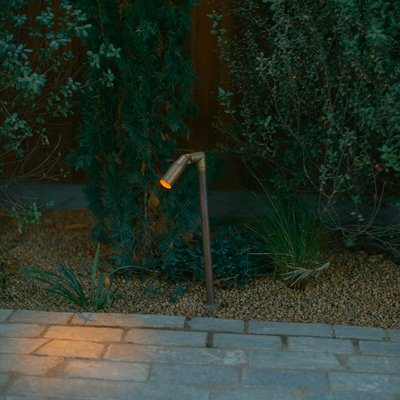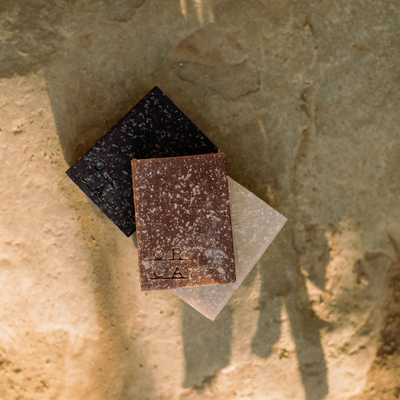PLANTS +
PEOPLE
A study of the symbiotic relationship between
humans and the gardens they tend to.
Amid the peak of summer in the California valley, Sarah Yates Mora’s Ojai garden is a breath of fresh air. Though the photographer and painter moved only recently into the home she’s been carefully renovating, the garden has been a central focus, at once a leaning in to the vast surroundings and embracing the specific utility that the native varietals provide. Read on for our conversation about honoring the subtleties of the seasons; allowing the landscape to direct a garden; and what she’s cooking and enjoying from her backyard bounty (including a deliciously sage-infused honey butter.

Sarah Yates Mora
004 sarah yates mora
region: ventura county
plant community: coastal sage scrub
landscape design: client
photography: justin chung

“It’s wonderful living so close to the mountains and having such a variety of critters [around]...In the stillness you can hear many of these creatures — an instant reminder of how much is alive around us.”
Sarah Yates Mora
Describe how your garden: feels, smells, sounds, tastes:
Our garden is a mix of drought tolerant plants that we chose for their ability to withstand extreme heat. There’s a softness to the color palette, including lots of muted greens and lavender—with the exception of the punchy pink Crepe Myrtles we planted in the tree belt.
Our garden’s fragrance is most prominently sage and all its varieties, including Russian and Black sage. And the Artemisia smells great too!
It’s wonderful living so close to the mountains and having such a variety of critters to enjoy, like owls, squirrels, snakes, lizards, bees, and bugs of all kinds. In the stillness you can hear many of these creatures — an instant reminder of how much is alive around us.
What is your earliest memory of being in a garden?
I grew up in an apartment in the city but we had neighbors who had a bit of a yard and who planted a fun variety of edible plants, which we used relentless in our imaginary playtime: the perfect ingredients for making “medicine”and “potions” (I thought that the Chinese Lantern flowers were certain to have magic powers…)

Can you share more about your relationship to planning and preparing your garden throughout the year?
We tend to do our tidying seasonally, with the most work done in the spring after the lavender blooms and again in fall after the shade tree in our backyard drops its leaves. Lou will trim plants, remove dead bits, and rake the decomposed granite. I cut all of the dead lavender blooms and remove the dried flowers from the butterfly bushes and Crepe Myrtles.
We let a lot grow wild in the backyard: I dream of our Matilija Poppy consuming the entire fence line one day. The front garden we like to keep more orderly. It’s my favorite when the decomposed granite is freshly raked, the Coyote bowl is full, the Russian Sage is filled with tiny yellow finches, and the Crepe Myrtles are blooming. But I also love seeing the lavender bloom in spring when the plants are covered with bees and ladybugs.
Where did your gardening sensibility come from?
I would have to say it was developed on the hikes through the hills I take with our dog. I love the
native plants so much, and the muted color palette of our region. It informs so much of what I envisioned for our yard.

Cotinus coggygria
(Smoketree, Smokebush)
An upright, spreading deciduous shrub or small tree featuring smoky pink flowers. Its airy seed clusters form a cloud of color that makes for a whimsical effect in the garden. This shrub can grow 10-15 feet tall and wide. Slow-growing and tolerant of most soils, plant in full sun to part shade.


Salvia Yangii
(Russian Sage)
This upright shrub has silvery gray-green foliage and blue violet blooms. Its fuzzy flowers attract pollinating bees and butterflies. The flowering perennial can grow up to three feet tall. Plant in full sun in well-draining soil.

“I consider food medicine, so all of the vegetables and fruits we are growing fall into that category for me. I’ve also incorporated the Russian Sage flowers into a honey butter that I love making to top freshly baked scones.”
Sarah Yates Mora
What plants are currently in your garden? What’s thriving?
We have an abundance of Lavender, Artemisia, Russian Sage, Butterfly Bushes, Willow Wattle, Mexican Sage, Juncus Grass, and a few outliers I picked up on an impulse at our favorite nursery. And then of course the trees — our beloved Olive Trees, a Silver Dollar Eucalyptus, a Smoke Tree, and the Crepe Myrtles in the tree belt.
Right now, the Russian Sage is thriving, and the Silver Dollar Eucalyptus continues to blow our minds with how quickly it grows and how beautiful it is.
What plants do you use for cooking or healing?
We have a vertical garden that some wonderful friends lent to us when they went on vacation this year and in which we’ve been growing a wide variety of greens, tomatoes, eggplant, peppers, squash, and herbs. It’s been a big win for us and has taken a lot of the challenges I’ve faced in the past with growing food.
I consider food medicine, so all of the vegetables and fruits we are growing fall into that category for me. I’ve also incorporated the Russian Sage flowers into a honey butter that I love making to top freshly baked scones. Every year I intend to make a lavender grape jelly with the blooms but can never bear to cut them…they bloom for such a short, special time.
What has a consistent application of care for your garden taught you about the role of seasons or cycles in everyday life?
It’s taught us to appreciate the subtlety of the California seasons. Growing up in Maine it was always very apparent and obvious when the seasons shifted. In Southern California the shifts are more subtle, but I’ve grown to appreciate how much really does change through tending to our garden.

Olea europaea
(European Olive, Common Olive)
An evergreen tree with gray-green leaves that comes in fruiting and fruitless varieties. Olives are drought tolerant and work well in a Mediterranean climate. These trees make great focal plantings in the garden. Plant in full sun and well-draining soil.

Acacia cultriformis
(Knifeleaf Acacia)
An evergreen shrub native to eastern Australia that works nicely as a focal or a screening in a garden. It has long branches with triangular, blue-gray leaves and when it blooms in late winter and early spring, it features clusters of tiny, rounded bright yellow flowers. This plant can grow up to 15 feet tall and wide. Plant in full sun to light shade, in well-draining soil.

“There’s a softness to the color palette, including lots of muted greens and lavender—with the exception of the punchy pink Crepe Myrtles we planted in the tree belt.”
Sarah Yates Mora
Artemisia ‘Powis Castle’
(Wormwood)
A drought tolerant, woody perennial with silver-gray foliage. Lovely in a border and for adding contrast to a garden. This plant is aromatic and low mounding. Plant in full sun or part shade in well-draining soil.

“Our garden has taught us to appreciate the subtlety of the California seasons. Growing up in Maine it was always very apparent and obvious when the seasons shifted. Here, tending to our garden has taught me to appreciate how much really does change every season in Southern California.”
Sarah Yates Mora


Acacia iteaphylla
(Willow Wattle)
A southern Australian shrub that is tall and dense. Evergreen and drought tolerant, this acacia has slightly drooping branches with narrow blue-green leaves. Its flowers are pale yellow and fragrant, blooming in the winter and early spring. It grows up to 13 feet tall and is a great option for a screening plant. Plant in full sun to part shade.



At orca, our work begins by understanding that it doesn’t end — a landscape is an ongoing dialogue, shaped by seasons and in response to our environments. Plants + People is an ongoing exploration of what it looks like to plant roots, to honor cycles, to inhabit space, and to accept impermanence through the perspectives of individuals we admire.






